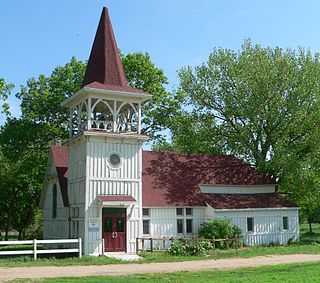| Look up santee in Wiktionary, the free dictionary. |
Santee may refer to:
| Look up santee in Wiktionary, the free dictionary. |
Santee may refer to:
| This disambiguation page lists articles associated with the title Santee. If an internal link led you here, you may wish to change the link to point directly to the intended article. |

The Lakota are a Native American tribe. Also known as the Teton Sioux, they are one of the three tribes of the Great Sioux Nation. Their current lands are in North and South Dakota. They speak Lakȟótiyapi—the Lakota language, the westernmost of three closely related languages that belong to the Siouan language family.

The Sioux or Oceti Sakowin are groups of Native American tribes and First Nations peoples in North America. The term is an exonym created from a French transcription of the Anishinaabe term "Nadouessioux", and can refer to any ethnic group within the Great Sioux Nation or to any of the nation's many language dialects. The modern Sioux consist of two major divisions based on language divisions: the Dakota and Lakota.

The Great Sioux Nation is the traditional political structure of the Sioux in North America. The peoples who speak the Sioux language are considered to be members of the Oceti Sakowin or Seven Council Fires. The seven member communities are sometimes grouped into three regional/dialect sub-groups, but these mid-level identities are not politically institutionalized. The seven communities are all individually members of the historic confederacy. In contemporary culture, the designation is primarily a linguistic, cultural, and for some, political grouping.
The term Nakota is the endonym used by those native peoples of North America who usually go by the name of Assiniboine, in the United States, and of Stoney, in Canada.
Mdewakantonwan are one of the sub-tribes of the Isanti (Santee) Dakota (Sioux). Their historic home is Mille Lacs Lake in central Minnesota, which in the Dakota language was called Mde wakan. Together with the Wahpekute, they form the so-called Upper Council of the Dakota or Santee Sioux.

The Crow Creek Indian Reservation is located in parts of Buffalo, Hughes, and Hyde counties on the east bank of the Missouri River in central South Dakota in the United States. It has a land area of 421.658 square miles (1,092.09 km2) and a 2000 census population of 2,225 persons. The major town and capital of the Crow Creek Sioux Tribe is Fort Thompson.

Lewis and Clark Lake is a 31,400 acre (130 km²) reservoir located on the border of the U.S. states of Nebraska and South Dakota on the Missouri River. The lake is approximately 25 miles (40 km) in length with over 90 miles (140 km) of shoreline and a maximum water depth of 45 feet (14 m). The lake is impounded by Gavins Point Dam and is managed by the U.S. Army Corps of Engineers, Omaha District.
The following is a set–index article, providing a list of lists, for the cities, towns and villages within the jurisdictional United States. It is divided, alphabetically, according to the state, territory, or district name in which they are located.

The Santee Sioux Reservation of the Santee Sioux was established in 1863 in present-day Nebraska. The tribal seat of government is located in Niobrara, Nebraska, with reservation lands in Knox County.

The Dakota are a Native American tribe and First Nations band government in North America. They compose two of the three main subcultures of the Sioux people, and are typically divided into the Eastern Dakota and the Western Dakota.

The Episcopal Diocese of South Dakota is a diocese of the Episcopal Church with jurisdiction over the state of South Dakota.

Native American tribes in the U.S. state of Nebraska have been Plains Indians, descendants of succeeding cultures of indigenous peoples who have occupied the area for thousands of years. More than 15 historic tribes have been identified as having lived in, hunted in, or otherwise occupied territory within the current state boundaries.
The Niobrara Reservation is a former Indian Reservation in northeast Nebraska. It originally comprised lands for both the Santee Sioux and the Ponca, both Siouan-speaking tribes, near the mouth of the Niobrara River at its confluence with the Missouri River. In the late nineteenth century the United States government built a boarding school at the reservation for the Native American children in the region. By 1908 after allotment of plots to individual households of the tribes under the Dawes Act, 1,130.7 acres (4.576 km2) were reserved for an agency, school and mission for a distinct Santee Sioux Reservation; the neighboring Ponca Reservation had only 160 acres (0.65 km2) reserved for agency and school buildings.

The Church of Our Most Merciful Saviour, also known as the Santee Mission, built in 1884, is a historic Carpenter Gothic style Episcopal church located on the Missouri River in the Santee Indian Reservation in Santee, Nebraska. Although its side windows are not arched, it otherwise exhibits all the common features of Carpenter Gothic churches: board and batten siding, lancet windows on the front along with a circular rosette window, belfry tower on the side and main entrance on the side though the belfry tower.